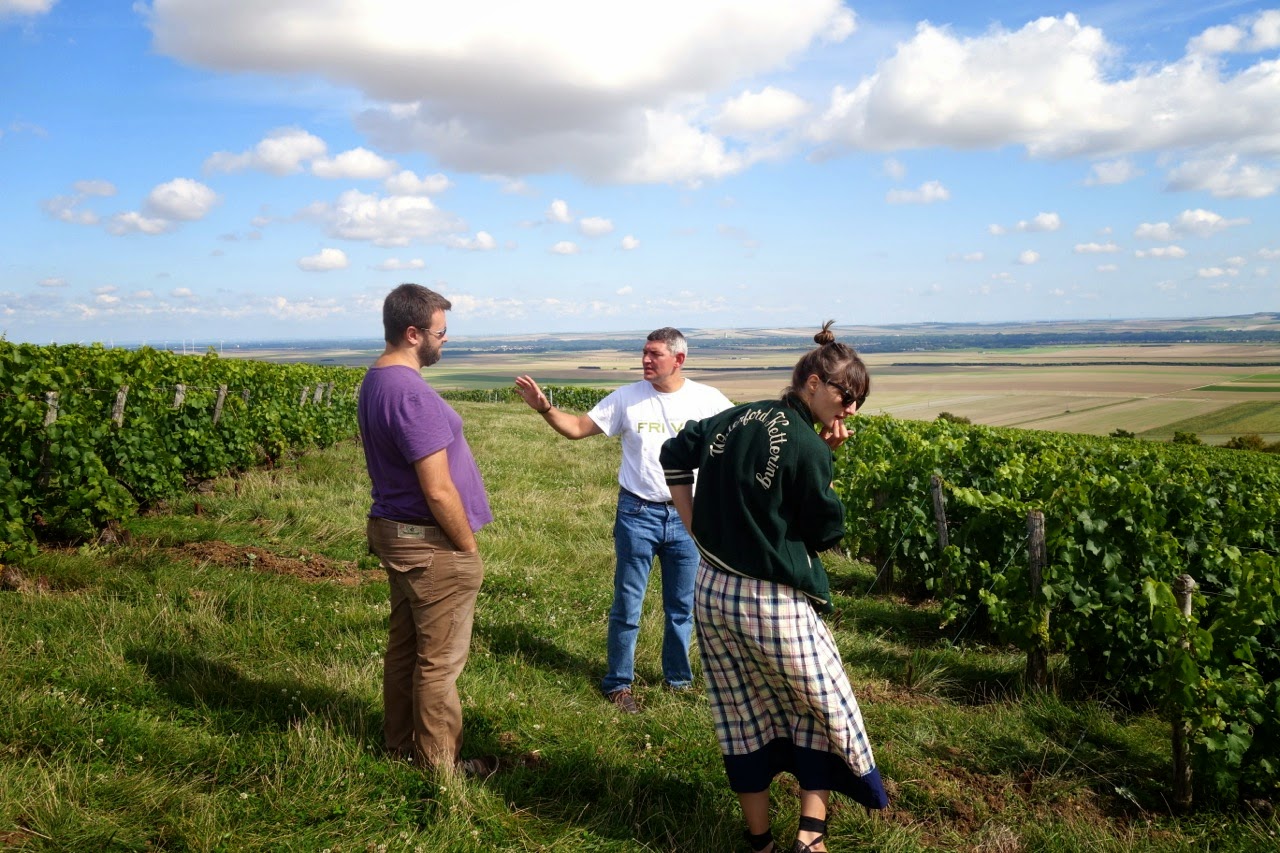When the Native Companion and I first visited Champagne winemaker Emmanuel Lassaigne in Aug. 2012, the maestro of Montgueux had tantalised us with the impressive shaggy-dog story of his forthcoming "Clos Sainte Sophie" cuvée. Lassaigne, who by his own admission makes at least one one-off cuvée per year, is no stranger to experimentation. But the "Clos Sainte Sophie" seemed a kind of perfect storm of narrative-sell.
The Clos Sainte Sophie is the only one of the Champagne region's 13 clos situated in the Aube. It's owned by the family behind French undergarment brand Le Petit Bateau. Cuttings from the vineyard were used to plant the first wine grapes in Japan in 1877. Lassaigne reached an agreement with the elderly owner to purchase the grapes starting in 2010. Lassaigne's plan for them? To age the wine in barrels previously used for Cognac, Mâcon-Solutré, and Vin Jaune, the latter sourced from Jura heavyweight Jean-François Ganevat.
I remember finding this strange, since the whole purpose of the venture - to showcase the Clos Sainte Sophie - would arguably be obscured by the exotic barrel-aging. But during a visit to his cellars with my friend Nick Gorevic of Jenny & François Imports last week, Lassaigne offered some clarification: he'd blended the various wines from the respective barrel types, thereby removing some of a taster's more trivial guesswork. Then he clarified again: actually, he'd kept the Vin Jaune barrels apart, since the wine aged therein had, oddly, not seemed to evolve much. Most illuminatingly, however, he went ahead and opened a bottle of the 2010 for us.
My tasting notes should be read with a grain of salt, since I knew a little about the still-unreleased cuvée beforehand. Was that why I detected a sort of bassy Cognac note on the nose? Lassaigne seemed to disagree, but he did allow that, even after thorough cleaning, the Cognac barrels had after six months added a whopping 2º alcohol to the wines aged inside them. The wine we tasted was 40% Cognac fût, with the rest have been aged in fût de Mâcon.
The nose seemed closer in spirit to "Les Vignes de Montgueux" than Lassaigne's other cuvées, though replacing the fresh muskiness of the former was a low-toned autumn-sweater note. In the mouth the "Clos Sainte Sophie" was sinuous and long, with lightly caramelised flavors of almond brittle and tamarind offsetting the wine's chalkiness and still-youthful acid. The effect was both visceral and cerebral, a hard-hitting and subtly genre-bending wine.
 |
| Lassaigne standing between "Le Cotet" (right) and a deeper-soil plot used for "Les Vignes de Montgueux" (right). |
This first vintage of "Clos Sainte Sophie" will be likely be released next year or the year after. So far, Lassaigne has produced four vintages of the wine, 2010 - 2013. But he's unsure whether he'll be able to continue making the wine this year, as the sons of the proprietor of the Clos Sainte Sophie have taken responsibility for renewing the contract, and, as Lassaigne put it, they're dreaming of luxury when it comes to pricing. Lassaigne was scheduled to discuss terms with them the day following our tasting.
 |
| Lunch. (Aux Crieurs de Vin was, rather tragically, closed that week.) |
Whatever the results of Lassaigne's negotiations with the Valtons over the Clos Sainte Sophie, the winemaker has other tricks up his sleeve. More recent experimental cuvées include wines made from fruit purchased from a plot called La Grande Côte, which the winemaker divided into three lots, entitled Alto, Tenor, and Soprano, which will see a graduated degree of oak-aging versus bottle aging, and which will be sold in packs of three. Basically it's a sommelier quiz kit.
We were about seven bottles deep into 'tasting' when a young photography crew showed up to take pictures of the domaine for Galeries Lafayette, a rather terrible French mall to which Lassaigne still sells wine out of loyalty to its previous wine buyer, Bruno Quenioux. Lassaigne invited them to have a few glasses with us, but they demured, saying that their photography assignment had just taken them through Bordeaux, whereupon they listed for us a lot of conventional luxury wines they'd recently had the good fortune to taste.
Lassaigne, characteristically indefatigable, pressed glasses into their hands anyway, rather as though he were offering something far superior...
Domaine Jacques Lassaigne
7 Chemin des Haies





No comments:
Post a Comment